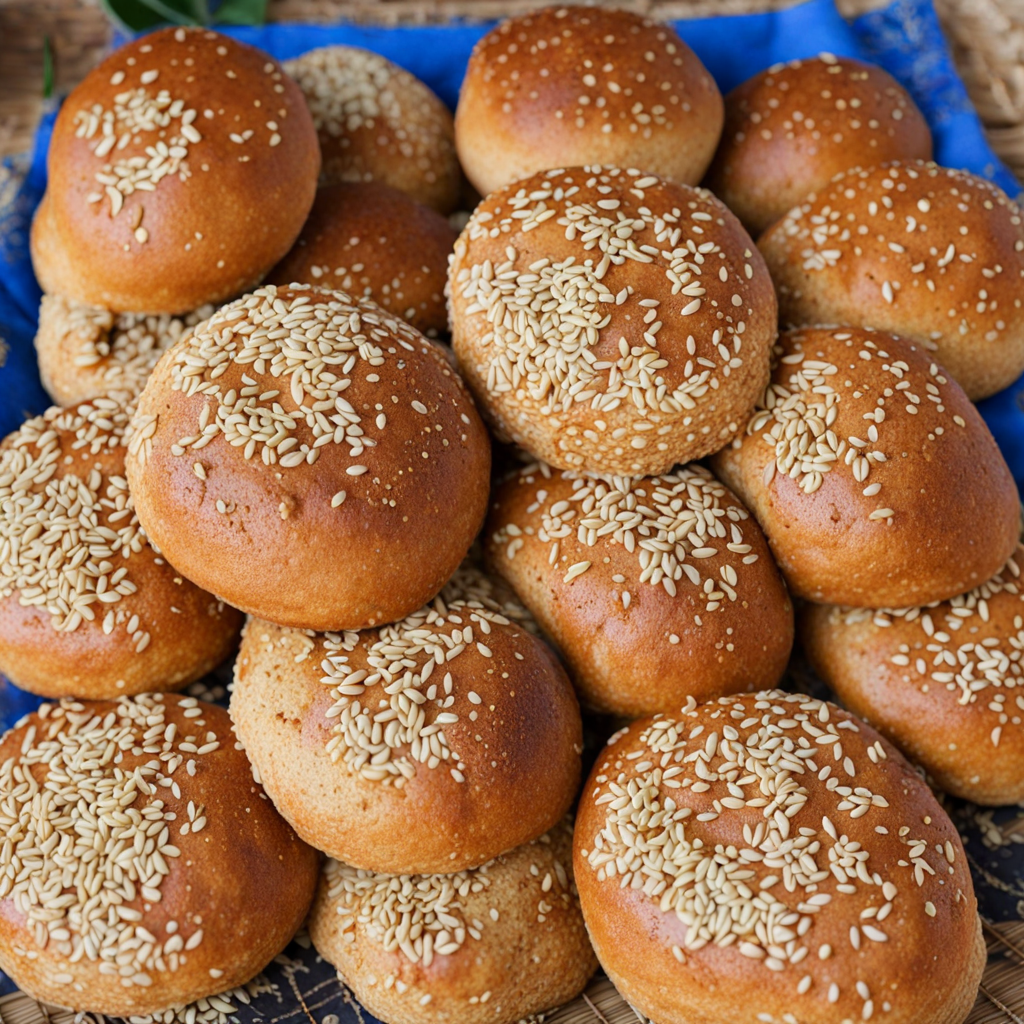Bagia
Bagia is a delightful Tanzanian snack that showcases the country's rich culinary heritage. These deep-fried fritters are primarily made from a base of lentils or chickpeas, which are ground into a smooth paste and mixed with an array of spices to create a flavorful batter. The addition of ingredients such as onions, garlic, and fresh herbs like coriander or parsley infuses the bagia with layers of taste, while a hint of chili brings a gentle heat that tantalizes the taste buds. The mixture is then shaped into small balls or patties and fried until golden brown, resulting in a crispy exterior that gives way to a soft, savory interior. The taste of bagia is a harmonious blend of nuttiness from the lentils or chickpeas and a medley of spices that reflect the vibrant flavors of East African cuisine. Each bite offers a satisfying crunch followed by the warm, earthy flavors of the legumes, elevated by the aromatic spices. Dip them in a tangy chili sauce or a cooling yogurt sauce for a delightful contrast that enhances the overall experience. Bagia can be enjoyed as an appetizer, a snack, or even as part of a larger meal, making them a versatile addition to any dining occasion. In Tanzania, bagia is often enjoyed during festive gatherings, street food markets, or as a tasty accompaniment to a cup of chai. Their popularity transcends borders, as they have become a beloved snack among locals and tourists alike. Discovering bagia not only introduces you to a unique taste of Tanzania but also connects you to the cultural traditions and communal spirit of sharing food that is integral to Tanzanian life.
How It Became This Dish
The History of Bagia: A Taste of Tanzania's Culinary Heritage The culinary landscape of Tanzania is as diverse and vibrant as its people, shaped by a rich tapestry of cultural influences, indigenous ingredients, and regional traditions. Among the many dishes that embody this heritage, Bagia stands out as a popular snack that captures the essence of Tanzanian street food. This deep-fried delicacy, known for its crispy exterior and flavorful filling, has a fascinating history that reflects the country's cultural evolution and social dynamics. Origins of Bagia Bagia, often referred to as "bhaji" or "bhajiya" in other parts of East Africa, has its roots deeply embedded in the Indian subcontinent, brought to the region through the waves of migration and trade. The Indian Ocean trade routes fostered interactions between the East African coast and Indian traders, which began as early as the 1st century AD. By the 19th century, with the establishment of the British colonial system and the subsequent influx of Indian laborers, particularly in the development of the railway system, Indian culinary influences became increasingly prominent in Tanzanian cuisine. The name "Bagia" itself derives from the Gujarati word "bhaji," which refers to a variety of fritters made from vegetables and seasoned chickpea flour. The incorporation of local ingredients and spices has led to the evolution of Bagia into a unique Tanzanian dish, while still retaining its Indian roots. Traditionally, Bagia is made by combining a base of lentils or chickpeas with an assortment of spices, vegetables, and herbs, creating a flavorful filling encased in a light, crispy batter. Cultural Significance Bagia holds a special place in Tanzanian culture, often enjoyed as a snack or appetizer during social gatherings, festivities, and community events. Its popularity can be attributed to its affordability and accessibility, making it a staple among street food vendors who serve it to locals and tourists alike. The act of sharing Bagia reflects a broader cultural practice of communal dining and hospitality, where food serves as a bridge connecting people and fostering relationships. In many Tanzanian families, the preparation of Bagia is a cherished tradition passed down through generations. Family gatherings often involve the whole family participating in the cooking process, with each member contributing their unique touch to the recipe. This practice not only reinforces familial bonds but also keeps alive the culinary heritage and storytelling associated with the dish. Furthermore, Bagia is frequently served during religious celebrations and cultural festivals, symbolizing unity and togetherness. For instance, during the month of Ramadan, it is common for Muslims to break their fast with Bagia, as it serves as a nourishing and satisfying option after a day of fasting. The dish’s ability to adapt to various dietary preferences—being vegetarian and often gluten-free—adds to its appeal across different communities. Evolution Over Time The evolution of Bagia in Tanzania reflects broader social and economic changes within the country. As urbanization increased in the late 20th and early 21st centuries, so did the demand for quick, convenient, and affordable food options. Bagia thrived in this environment, emerging as a quintessential street food item alongside other local snacks such as samosas and kachori. The globalization of food culture has also played a role in the development of Bagia. With the rise of food tourism and the increasing interest in authentic culinary experiences, Bagia has gained recognition beyond local borders. Street food festivals, cooking classes, and culinary tours have introduced this delightful snack to international audiences, allowing it to be appreciated for its unique flavors and cultural significance. In recent years, the influence of health trends has prompted some vendors and home cooks to experiment with Bagia's ingredients and preparation methods. While traditional recipes remain popular, variations have emerged that incorporate healthier substitutions, such as using whole grains or different types of legumes, and baking instead of frying. This adaptability speaks to the resilience of Bagia as a dish, rooted in tradition yet open to innovation. The Ingredients and Preparation At its core, the preparation of Bagia is straightforward, yet it allows for creativity and personal expression. The primary ingredient is usually a combination of chickpea flour (besan) and water, which forms the batter. The filling can vary widely, reflecting regional preferences and seasonal ingredients. Common fillings include mashed potatoes, mixed vegetables, and spices such as cumin, coriander, turmeric, and chili powder. Fresh herbs like cilantro and mint are often added for an extra layer of flavor. To prepare Bagia, the filling is first seasoned and shaped into small fritters or patties. These are then dipped in the chickpea batter and deep-fried until golden brown and crispy. The result is a delightful contrast of textures: the crunchy exterior gives way to a soft, spiced interior, making each bite a rewarding experience. Bagia is typically served hot, accompanied by a variety of dipping sauces, including tangy tamarind chutney, spicy chili sauce, or a cooling yogurt dip. This combination of flavors enhances the overall experience, making Bagia not just a snack but a culinary delight that engages the senses. Conclusion Bagia represents more than just a popular Tanzanian snack; it encapsulates the historical exchange of cultures, the significance of food in community bonding, and the adaptability of culinary traditions in the face of modernity. From its Indian roots to its status as a beloved street food in Tanzania, Bagia is a testament to the rich culinary heritage of the region, where flavors, stories, and identities intermingle. As Tanzania continues to evolve and embrace its diverse cultural influences, Bagia will undoubtedly remain a cherished symbol of this journey—connecting past and present, tradition and innovation, and people from all walks of life. Whether enjoyed at a bustling street cart in Dar es Salaam or prepared lovingly at home, Bagia serves as a flavorful reminder of the power of food to bring people together and celebrate shared experiences.
You may like
Discover local flavors from Tanzania







